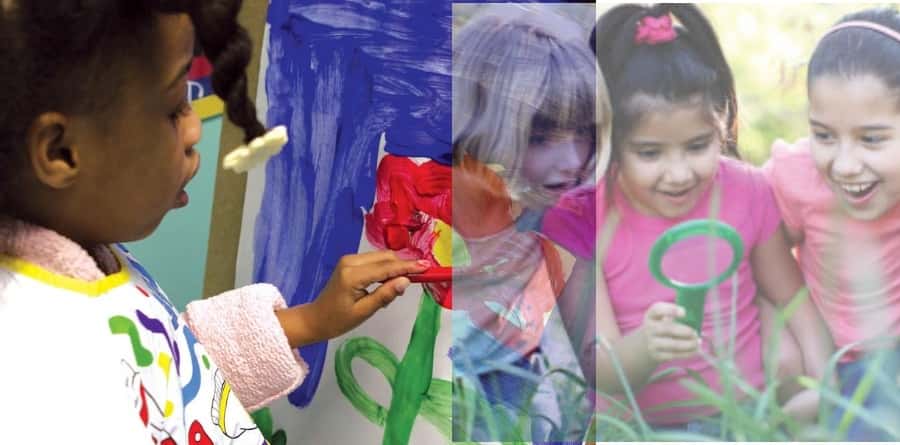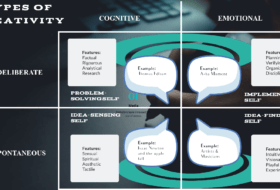Are there proven measure on how to develop creativity today? Creativity is key to efficiency in every modern workplace. There is no doubt saying that future employment and success in business would be based on it. This is why we must desire to develop that creative genius we were born with.
It has been proven that children are more creative than adults. Indeed, children are our most cherished asset. They should be well managed, just as we manage our finances because our future depends on them. If we manage them negatively, we will earn negative returns and vice versa.
If children are creative, there is no doubt that everyone has in them innate creative genius which is locked within. Similarly, we need to manage our mental attitude to achieve a desired level of creativity.
Larry Kim says that creativity is like a muscle that can be stretched, challenged and pushed pass its comfort zone. Mehdi Toozhy argued that creativity can be hindered by internally or externally. Internal barriers refer to anything that inhibits your inspiration and imagination, while the external barrier lies in your expression or presentation skills.
James Oliver-Roche identified three kinds of creativity as intellectual or cerebral, kinetic or tangible, and emotional or interpersonal. According to him, intellectual creativity is attributed to the scientist, while kinetic creativity is attributed to the artist, and emotional creativity attributed to the catalysts.
To him, intellectual creativity is associated with scientists, economists, and historians who develop theories and hypotheses based on facts and natural laws. Those who exhibit kinetic creativity are people we often see as being creative. They include artists and craftsmen whose creative works are easily seen and appreciated, maybe, through paintings and designs. Interpersonal creativity is usually linked with inspirational speakers, activists, inspirational politicians, and psychologists. These people have a deep understanding and are talented enough to identify, harness, and manage people’s emotions.

Creative invention: Heat/ Cold Charging Device
This goes a long way to telling us that there is room for creativity in every field and trade, even in relationships. You need to discover which category you belong to and start developing your creative genius. However, C.P. Snow warned that creativity is enhanced when two or more cultures can interact with each other.
Sir Ken Robinson also believe that creativity begins with culture. In his speech at the World’s Congress of Accounts, he narrated that, “A company to grow, its leaders must create a culture of possibility. A thriving culture of innovation requires one to approach innovation systematically and systemically.” To him, “The companies that survive best are the ones who cultivate a flexible internal culture, so they can deal with challenges they face outside.”
He also envisaged that “All companies have good ideas and plans, but if you look at the successes of companies like Apple or General Electric… they tend to be serial innovators. They tend to have an internal culture where innovation is at the center of their interest, not something they hope will happen. They plan for it. They work towards it. They create systems where it will happen.”
Thus, in the process of developing your creative genius, you should think of culture, both internal and external.
Before we proceed, the first question is, can creativity be taught and learned?
The
answer is YES. If creativity cannot be taught and learned, there is no point inreading
this post.
Mike Colagrossi disclosed research findings on available teaching methods that inspire creativity among students. According to him, “A creative mindset can be taught, but not from sitting in a lecture hall or taking a standardized test.”
Some of the methods that have successfully sparked creativity among students include the Osborne-Parnes model, adopting a divergent and convergent way of thinking, building a congenial learning environment, and use of the incubation model.
How to Develop Creativity and Creative Genius
There are different ways identified by different people on how to develop creativity and the creative genius in anyone. You can try each of these methods or a combination of them and see what works best for you.
Encourage brainstorming through open-ended questions
One of the proven ways on how to develop creativity is through brainstorming. By brainstorming, we should learn to ask open-ended questions. This will give ample room to brainstorm.
Brainstorming
Brainstorming was developed by Alex Osborn. It is a technique that encourages creativity among groups. According to Osborn, brainstorming involves the generation of new ideas from a group concerning the solution to a problem. Through brainstorming, ideas are generated to solve impending problems. In brainstorming, people are grouped together and allowed to make suggestions. These suggestions will be specifically directed toward solving a problem. For example, if your cooking gas finished abruptly while still cooking, what will you do, assuming you have no kerosene in your stove? Suggestions must be directed at solving the problem at hand.

Capturing Ideas in Brainstorming
Because brainstorming is a group work, the following rules should be observed:
- Avoid Criticism: Suggestions or ideas generated by each member of the group should not be criticized. Some people are fond of criticizing others, they believe they are super intelligent. Other people’s idea may be trivial to the problem at hand, yet it must be accepted.
- Quantity is preferred to quality: Each group should be allowed to generate as many ideas as possible. Here, the number of ideas matters more than the quality. This is why no single idea should be criticized. The aim of brainstorming is to allow everyone to contribute his quota towards finding a solution.
- Full participation: Every member of the group should be part of the solution. Everyone should be allowed to voice out what s/he thinks is the solution to the problem at hand. If ideas are not criticized, it will give everyone room to make his/her own contribution. As a result, the number of ideas will increase. Osborn noted that “it is easier to tone down a wild idea than to think up a new one.”
- Identify the solution: The ideas generated should not be left fallow. They should be built upon to solve the problem at hand. This involves combining and adding up ideas as well as improving on them to arrive at a solution.
Brainstorming is a great way to ensure that every member of the group is part of the creative solution to the problem. This should be engaged in our homes and schools to help develop our children’s creative abilities.
Supportive Environment
A supportive environment is essential to creativity. The absence of a supportive environment can render one’s efforts futile. By environment, we mean passion, what gives you the appetite to live on. What is it that takes away sleep from your eyes, yet brings joy and happiness? What do your children feel free in doing, even at difficult times? What brings out the best in them?

Nurturing Creativity in Children
Everyone cannot be a lawyer, a medical doctor, a chartered accountant, and many more. Parents and guardian usually persuade their wards to pursue careers of their choice. To them, the opinion of the child does not matter. Most adults have failed because they pursued the career chosen by their parents. Some could not help it, yet, they are dying in silence. We must let our children find a suitable environment that will bring out the best in them. We can help by directing and encouraging them. If they are missing the path, we can redirect them, if they are abusing the privilege, we can caution them. But, we should not coarse them into doing what they don’t want. This will help them develop the right frame of mind. Allow them to choose, and watch them flourish and become super creative.
Allow room for improvement
Some parents and teachers are stagnant waters. They neither improve nor allow others room to improve themselves. When you do not allow children room for improvement, they will be dependent on others. We should always give them room to try their skills and make mistakes. Trial and error master the game. However, when a child device a non-customary way of doing something, we usually penalize them. This can be seen in some homes and schools. Of course, there could be reasons for this. For instance, a teacher may know only one method as a solution. In this case, a student who uses another method has failed, even if you arrive at the solution. This has happened to me in my secondary school and university years. We should give room for improvement as well as allow our others room for improvement. This will help them develop the creative genius within them. We should also encourage our children to be open to new ideas, new concepts, and new experiences. This will help them to keep learning and improving on their skills.
Practice makes for perfection
For anyone to master a skill, s/he needs constant practice. If encouraged to keep practicing, our children will become masters in creativity. Practice enhances understanding. It will also help the child to broaden his/her knowledge in the chosen skill. Through practice, a skill can become a habit, the same is true for creativity.
Larry Kim discussed the following methods:
Learning through collaboration – learning with and from others brings out that creative genius in you.
Doing something you love and finding inspiration from other industries – will enable you to improve on yourself and improving on what others are doing.
Pick a terrible idea – looking at the most useless and stupid ideas you can ever imagine sparks creativity, and activate the creative genius within you
For Kendra Cherry, the following measures will develop that creative genius within. Being committed, becoming an expert in your field, rewarding your curiosity, being willing to take risks, building your self-confidence, making out time for creativity, fighting the fear within, keeping a creative journal and overcoming negative attitudes that block creativity and the genius within you.
On her seven steps to develop creativity, Mehdi Toozhy identified that one can develop creativity or bring out that creative genius if he/she can do the following: stop depending on others, dream, think and create, surround himself with excellence, look for some non-value-added jobs, fight one’s fear of failure, expand his comfort zone, and enjoy life.
Other ways include practicing pattern recognition, using the musical instrument, playing chess, exercising, and drawing and photography.
Conclusion
Creativity, of course, cannot be faltered. Within us, it is hidden, we have the power and choice to ignite it. It is believed that exercising the right side of your brain will inevitably develop your imagination and assist in developing creativity and creative thinking skills. One key way of doing this is by killing fear and believing that we can do it.
We must not stop our children when they become too inquisitive. We must also not stop ourselves. We can let them find answers to their own questions. Behind every question is a hidden answer. We must encourage them to ask questions and suggest answers to the questions. This will help them develop their creative mind.
Encouraging creativity in our homes and schools will help us to be part of the solution rather than be the problem. What is applicable to the children is also applicable to the adults. So, it’s time to activate that creative genius within. It has been hidden for ages, rise now and take out the genius within you!




